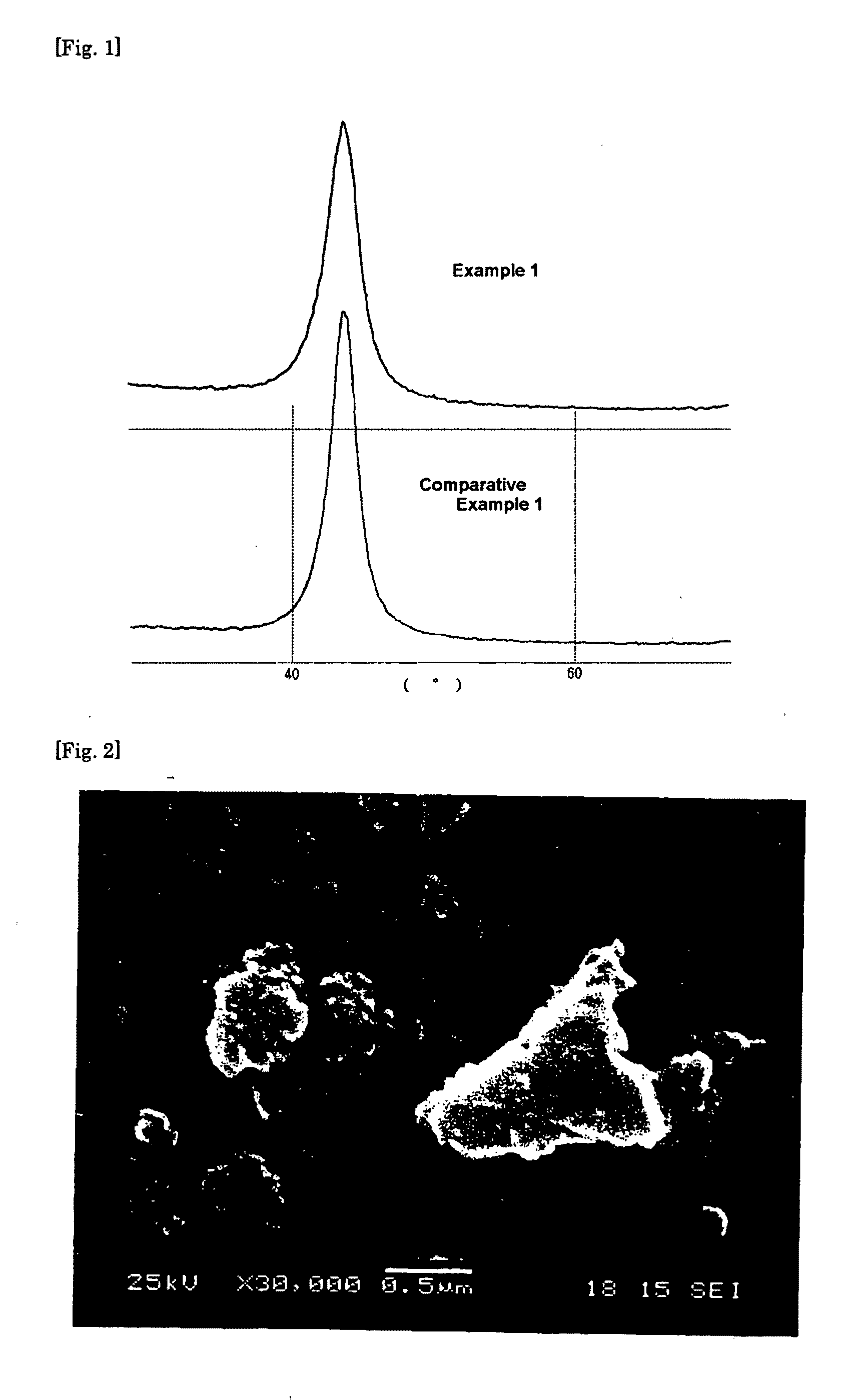Process For Producing Fine Diamond and Fine Diamond
a technology of fine diamond and process, which is applied in the direction of nitrated pentaerythritol explosive composition, crystal growth process, weaving, etc., can solve the problems of high yield, high roughness of material surface, and prone to produce large particles, etc., to achieve excellent mechanical, thermal, electric and optical properties, and small size variation. , the effect of high yield
- Summary
- Abstract
- Description
- Claims
- Application Information
AI Technical Summary
Benefits of technology
Problems solved by technology
Method used
Image
Examples
examples
[0049]The present invention will be explained more specifically by Examples, but the present invention is not limited only to these Examples.
examples a1
[0050]After 100 g of pentolite composed of 50% of TNT and 50% of PETN was melted in a melt bath heated with water vapor, 3 g of adamantanediol was added thereto, stirred with an agitator to blend, followed by melt loading in a molding vessel to obtain 103 g of a molded article of explosive composition. This is placed in an explosion chamber with an internal space of 15 L, and the explosive composition was exploded by a 6 sized detonator. After the explosion, the gas inside the explosion chamber was exhausted, the inside of the explosion chamber was washed with water, and solid explosion products were collected in slurry and allowed to stand. The precipitation was separated, metals such as fragments of the detonator were removed by hydrochloric acid treatment, the soot was removed by a mixed acid of concentrated nitric acid and concentrated sulfuric acid, and then the precipitation was washed with water and dried. As the result, light grey diamond powder was obtained at a yield of 2%...
example b1
[0053]After 100 g of pentolite composed of 50% of TNT and 50% of PETN was melted in a melt bath heated with water vapor, 2 g of C60 which is 2% based on the pentolite was added thereto, stirred with an agitator to blend, followed by melt loading in a molding vessel to obtain 102 g of a molded article of explosive composition. This is placed in an explosion chamber with an internal space of 15 L, and the explosive composition was exploded by a 6 sized detonator. After the explosion, the gas inside the explosion chamber was exhausted, the inside of the explosion chamber was washed with water, and explosion products were collected in slurry and allowed to stand. The precipitated explosion product was separated, metals such as fragments of the detonator were removed by hydrochloric acid treatment, the soot was removed by a mixed acid of concentrated nitric acid and concentrated sulfuric acid, and then the precipitation was washed with water and dried. As the result, the diamond powder o...
PUM
 Login to View More
Login to View More Abstract
Description
Claims
Application Information
 Login to View More
Login to View More - R&D
- Intellectual Property
- Life Sciences
- Materials
- Tech Scout
- Unparalleled Data Quality
- Higher Quality Content
- 60% Fewer Hallucinations
Browse by: Latest US Patents, China's latest patents, Technical Efficacy Thesaurus, Application Domain, Technology Topic, Popular Technical Reports.
© 2025 PatSnap. All rights reserved.Legal|Privacy policy|Modern Slavery Act Transparency Statement|Sitemap|About US| Contact US: help@patsnap.com



